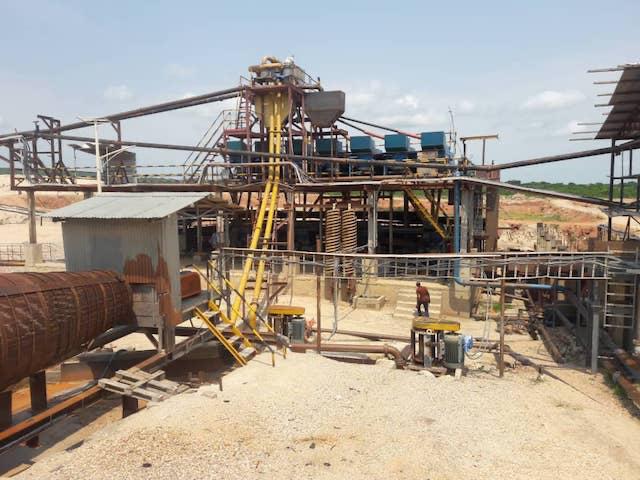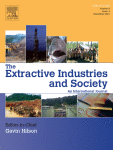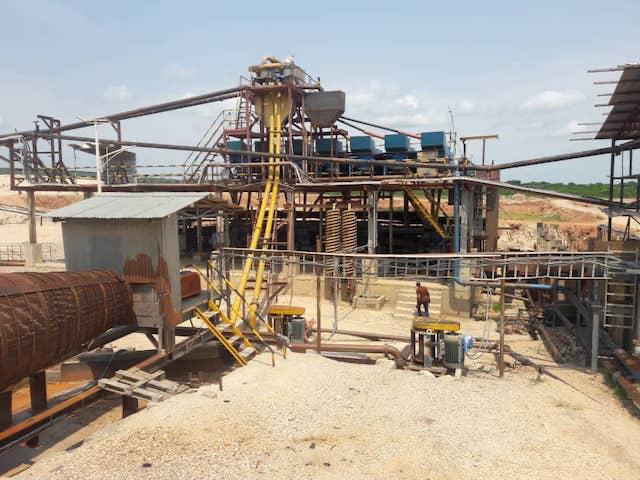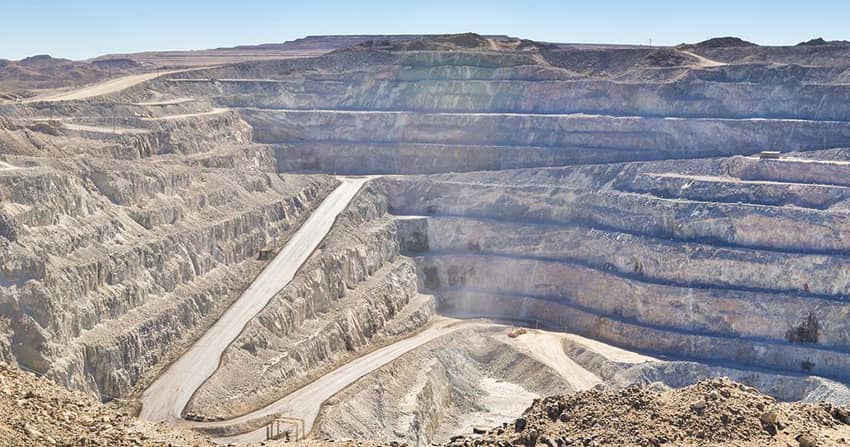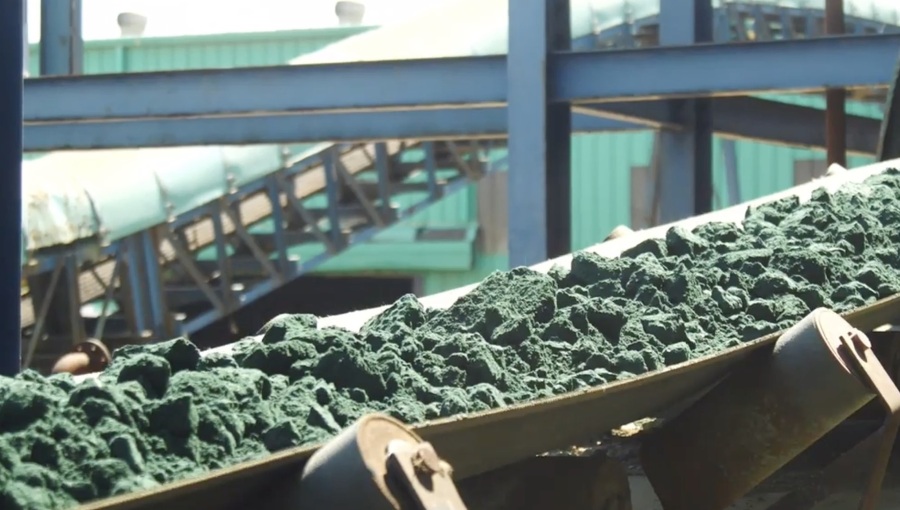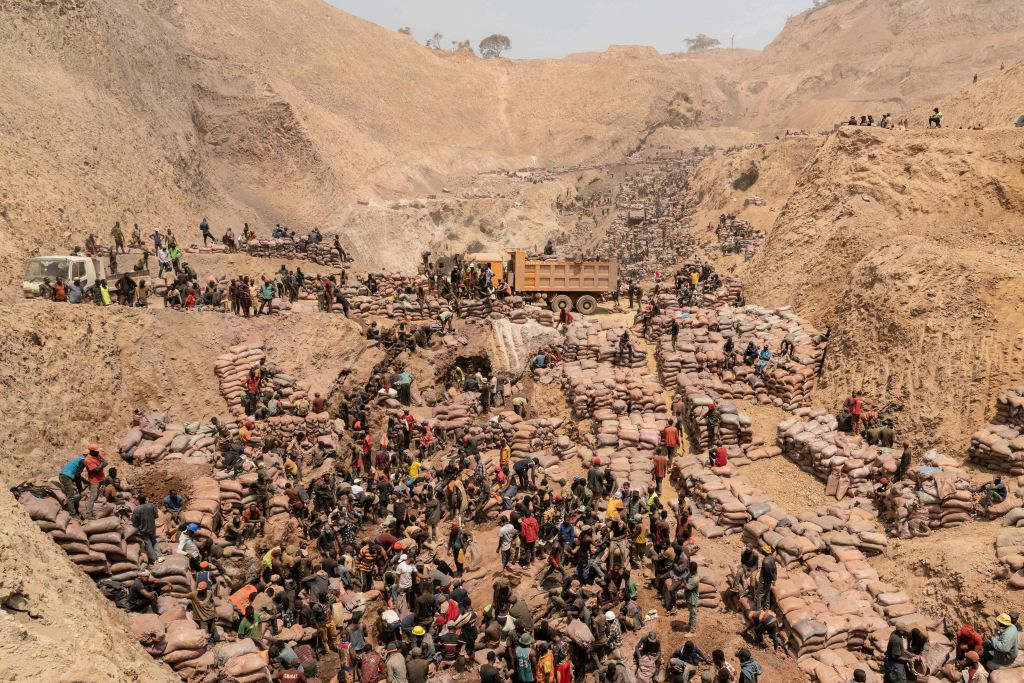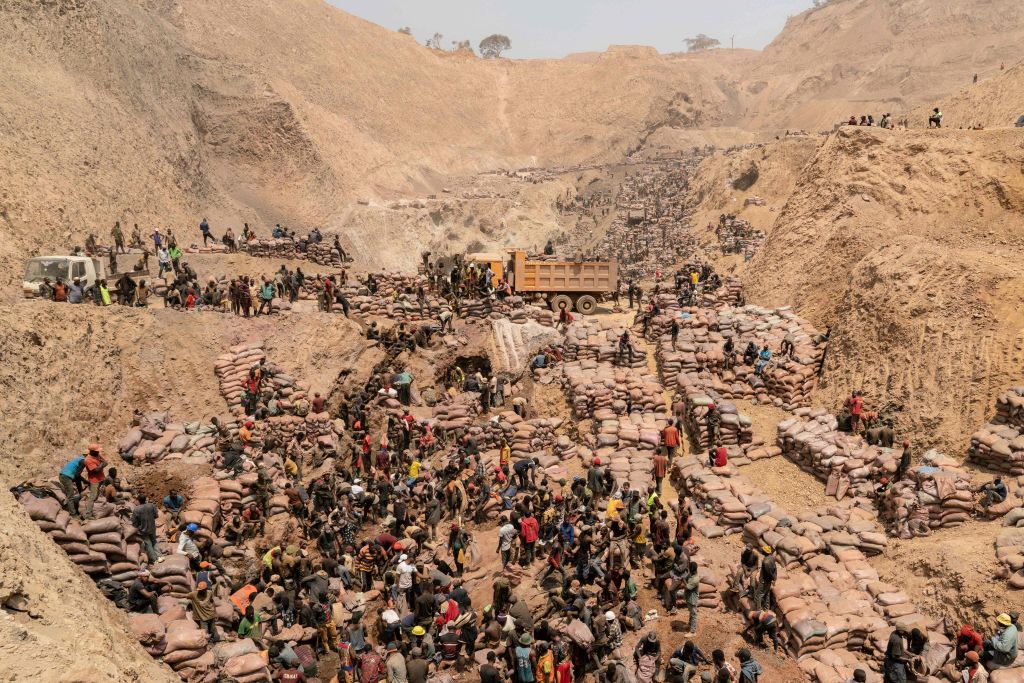09/12/2023
Carlos Posted
Could the DRC become the Saudi Arabia of the electric vehicle age?
Perhaps no country has more to gain from the ‘clean’ energy transition than the Democratic Republic of the Congo (DRC), which sits atop some of the world’s biggest copper, cobalt, coltan and lithium reserves.
The planet’s cobalt reserves total 7.6mn tonnes of which the DRC has 3.5mn tonnes, followed by Australia with 1.4mn tonnes and Indonesia with 600,000 tonnes, according to the US Geological Survey (USGS). In 2022, the DRC produced an estimated 130,000 tonnes of the metal, or 70% of the world’s production (Indonesia, in second place, produced only 10,000 tonnes).
Cobalt is an essential component in lithium-ion rechargeable batteries used in electric vehicles (EVs). It is also present in many of the portable devices that are part of daily life – including smart phones, tablets and laptops. In most cases, it is a by-product of nickel and copper mining. Cathodes in lithium-ion batteries are made up of between roughly 10% and 30% cobalt, with each EV needing between 6 kg and 12 kg of the element.
Furthermore, the DRC is endowed with vast copper and coltan reserves and large – mostly untapped – lithium deposits. In 2021, the DRC produced around 1.88m tonnes of copper, becoming the leading copper-producing country in Africa (Zambia was the second biggest producer at 880,000 tonnes). The DRC has 60% of the world’s coltan reserves. Coltan is used primarily for the production of tantalum capacitors – used in mobile phones and almost every kind of electronic device.
Meanwhile, copper’s critical role in EV batteries and other green energy technologies has led some to call it ‘the new oil’, and the DRC is being dubbed ‘the Saudi Arabia of electric vehicle age’. The global thirst for copper is expected to jump by 20% by the year 2035, on the back of burgeoning demand from EVs, electricity transmission grids and renewable power generation.
The DRC boasts some of the highest quality copper reserves globally, with some of the mines estimated to contain grades above 3%, significantly higher than the global average of 0.6% to 0.8%. International mining companies attracted by high-grade and low-cost mines are increasingly interested in the DRC’s copper belt region in the southern part of the country. The country’s gold mining sector is also witnessing renewed interest from mining companies.
Furthermore, the DRC is home to what some experts believe is the world’s biggest lithium deposit, Manono-Kitolo, in the southern province of Tanganyika. The mine has reserves amounting to 120mn mt of lithium ore grading 0.6% lithium, resulting in 0.72mn mt of lithium. It has conditions for large-scale, open-cast mining but, currently, its development is stalled by a dispute between Zijin Mining, the Chinese mining company, and AVZ Minerals, the Australian mining company.
In fact, the DRC is considered the world's richest country in terms of its natural resources. Its untapped deposits of raw minerals are estimated to be valued at more than $24trn, according to Michigan State University. It is home to 1,100 different minerals and precious metals, including tin, tungsten and tantalum. It is also the world’s fourth-biggest producer of diamonds.
The country is Africa's fourth most populous country (95.2mn people) and had an estimated $59bn economy in 2022, but income per head is a paltry $622 a year, according to the International Monetary Fund. The DRC has a monocultural economy – more than 90% of its wealth comes from the extractive industries.
In March 2018, the DRC’s president signed a new mining code into law. It increased the royalties on copper from 2% to 3.5%, on gold from 2.5% to 3.5% and on cobalt from 2% to 10%. Furthermore, it introduced a new 50% tax-rate on so-called 'super profits', defined as income realised when commodity prices rise 25% above levels in the project's bankable feasibility study.
Gécamines, the state-owned mining company, has minority stakes in most of the DRC’s big cobalt and copper mines partnerships operated by foreign mining groups but it no longer operates mines.
Of the 19 cobalt operations in the DRC, 15 are now owned or co-owned by Chinese entities. The five largest Chinese mining corporations with interests in cobalt and copper in the country have access to credit lines from Chinese state banks totalling an astounding $124bn. More than 70% of the world’s cobalt processing takes place in China (in fact, 80% of the DRC’s cobalt output heads to China for processing).
By 2030, global cobalt demand is expected to double – driven by battery applications in EVs – and the DRC is forecast to contribute 44% of the supply growth, creating an immense opportunity for the country.
The biggest mining projects in the DRC include the Kamoa-Kakula copper project, Tenke Fungurume mine and Kamoto copper. The Kamoa-Kakula copper project is owned by a joint venture comprising Ivanhoe Mines (39.6%), Zijin Mining Group (39.6%), Crystal River Global (0.8%) and the DRC Government (20%). With measured resources of 90mn tonnes at 3.13% copper and probable mineral reserves of 235mn tonnes, the project is considered to be among the world’s biggest, undeveloped high-grade copper discoveries.
The mine started producing concentrates in May 2021, with commercial production starting in July 2021. It is being advanced through a phased approach, with peak production estimated at 800,000 tonnes per year. This would make the project the second-biggest copper complex globally.
The Tenke Fungurume mine is a copper-cobalt project owned by Chinese private holding company CMOC (80%) and Gécamines (20%). CMOC acquired controlling interests of the mine in 2017 in a $3bn transaction, and in August 2021 it announced plans to double production with a $2.51bn investment. The investments will raise output from 183,000 tonnes of copper to 383,000 tonnes per year and from 15,400 tpy of cobalt to 32,400 tpy, bringing total mineral production to 415,400 tpy. It is the world’s second-largest cobalt mine.
The Kamoto Copper Company (KCC) is owned by a joint venture comprising Glencore (75%), Gécamines (20%) and Simco (5%), and is the largest active cobalt mine in the world. KCC owns two open-cast mines (KOV and Mashamba East) as well as one underground mine (Kamoto concentrator) and the Luili refinery in Kolwezi. KCC is targeting an annual nameplate capacity of 300,000 tpy of copper and 30,000 tpy of cobalt, bringing total mineral production to 330,000 tpy.
The DRC has some of the world’s biggest mineral deposits but, unfortunately, the country has significant security and political risks – made worse by a lack of robust infrastructure. Transparency International placed it in 166th position among 180 countries on its Corruption Perceptions Index 2022. More than 120 militias and armed groups operate in the country’s eastern region.
It is estimated that the country has up to 200,000 artisanal miners, who work with their bare hands and with shovels down cobalt mines of up to 30m in length. In the past, campaigners said that many children were involved in the process but the government has tried to clamp down on child labour.
There is extensive interaction between the large-scale mining (LSM) producers and artisanal and small-scale mining (ASM), both commercially and physically. A number of the LSM producers source and process material from artisanal miners. The ASM sector has historically performed the role of ‘swing producer’, with activity rapidly responding to market movements. Roughly 80% of ASM is informal, so it typically takes place without proper permits or any adherence to environmental and labour regulations.
Cobalt is likely to remain a vital component in the manufacture of rechargeable batteries for the foreseeable future, but its mining process throws up an ethical dilemma for EV manufacturers, including Tesla, Volkswagen and GM. Many EV makers are trying to reduce the proportion of cobalt used in the batteries because of its high costs and availability issues. However, at the moment, if they want EVs with a range of more than 300 km on one charge, they must use cobalt.
In September 2023, the Congolese government suspended more than 20 mining licences, on the basis that a number of the companies had not signed agreements related to social and environmental commitments to local communities. However, local observers believe that the hasty decision was motivated more by the government’s desire to acquire and re-sell assets in the run-up to the country’s national elections on December 20 this year. The move shows how fragile the business environment is in the DRC and could undermine investor confidence in the country.
On December 20, simultaneous elections will be held for the President, almost all of the members of the National Assembly, almost all of the elected members of the 26 provincial assemblies, and, for the first time under the new constitution, members of a limited number of commune (municipal) councils. Félix Tshisekedi, the current President, is the favourite to be elected for a further five-year term.
Banking experts say that Western majors – which previously would not have considered the country – were looking at the DRC because of the shortage of new mineral discoveries in relatively safe jurisdictions in North America and Australia. Mining companies tend to take a long-term view — what is perceived as risky today might not be so in ten years’ time.
For example, in December 2023, Ivanhoe Mines, the Canadian mining company, announced the discovery of high-grade copper reserves. Dubbed the Kitoko discovery, the copper deposits are situated within the joint venture licences recently acquired by the miner in the Western Foreland, spanning an expansive area of 247 sq km.
Haut-Katanga is the richest province in the DRC and home to many of the country’s mineral reserves. Lubumbashi – the DRC’s second-biggest city with 2.78mn people – is the province’s capital and biggest city. It is located 1,550 km from Kinshasa, the DRC’s capital city. It lies in the Copperbelt region, along the border with Zambia, and acts as a hub for many of the country's largest mining companies.
Currently, mining firms operating in the DRC prefer to transport metals by truck to often congested ports in Tanzania, Mozambique and South Africa but these journeys are expensive and take weeks to complete.
In September 2023, the European Union and the United States teamed up to develop a new railway line, connecting southern DRC and northwestern Zambia to regional and global trade markets via Angola’s port of Lobito. Feasibility studies are now underway but the initiative indicates how important the DRC is to the global supply chain of critical materials. Overall, the railway’s developers plan to invest $455mn in Angola and up to $100mn in the DRC.
Market conditions for cobalt have weakened substantially since the price peak in 2022. Cobalt prices have plummeted by $18,535 per tonne, or 35.68% since the beginning of 2023, according to trading on a contract for difference that tracks the benchmark market for the commodity. This dynamic will likely remain through 2024, as a plentiful and growing supply surplus maintains pressure on prices. In the longer term, demand for cobalt is likely to outpace supply, lifting prices and supporting a new wave of supply-side investment.
The energy transition represents an amazing opportunity for the DRC. One of the world’s poorest countries could become a lot wealthier if its critical minerals are mined responsibly. There is the chance to distribute that wealth throughout society. However, significant obstacles remain. The DRC is also one of the world’s most corrupt countries and that is not likely to change soon.
Perhaps no country has more to gain from the ‘clean’ energy transition than the Democratic Republic of the Congo (DRC), which sits atop some ...

intellinews.com
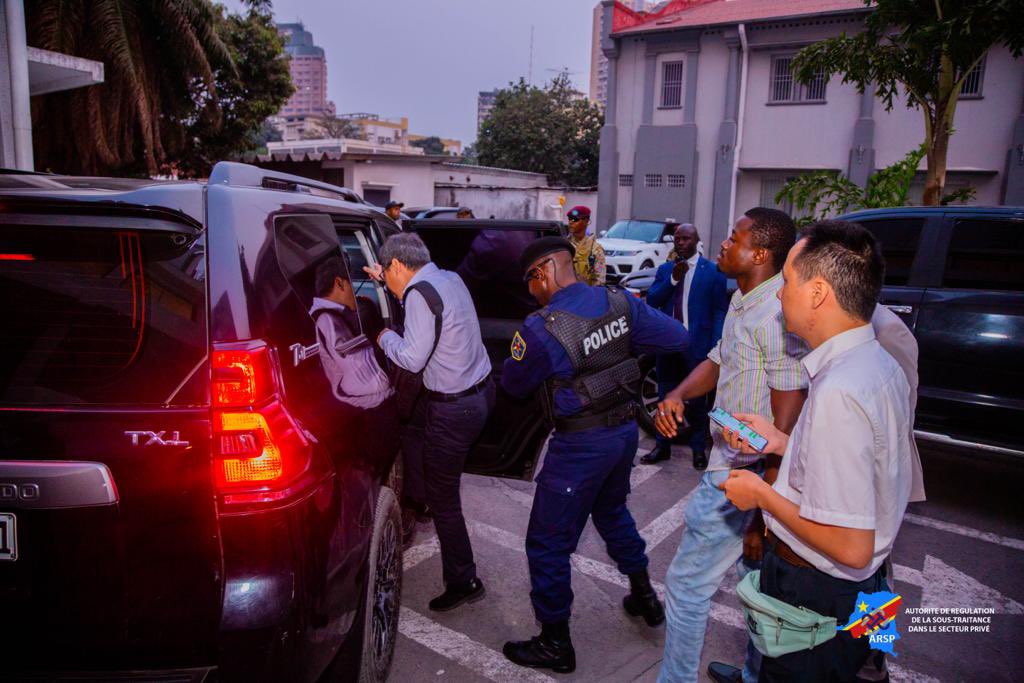
 mines.cd
mines.cd

 mines.cd
mines.cd

